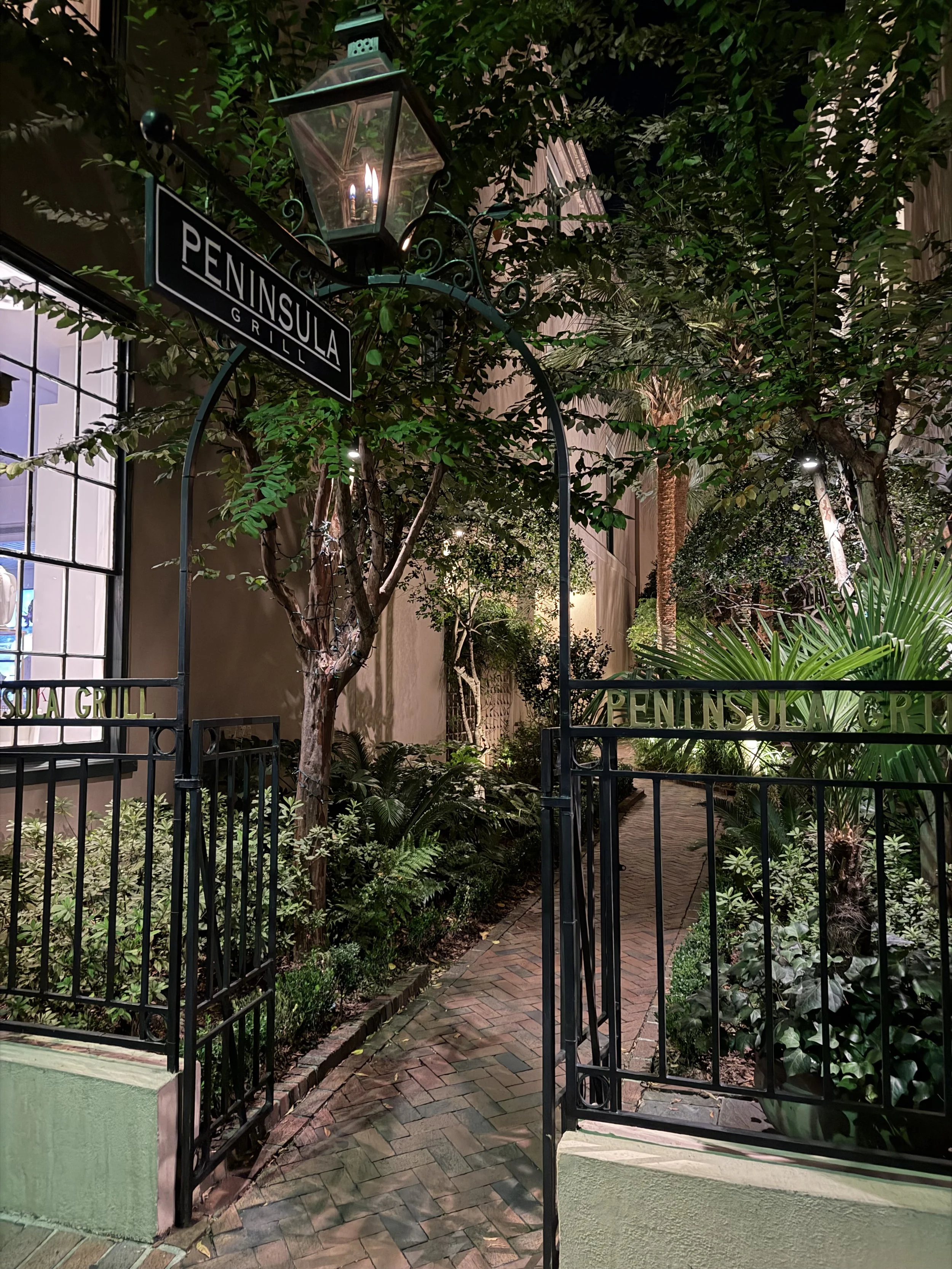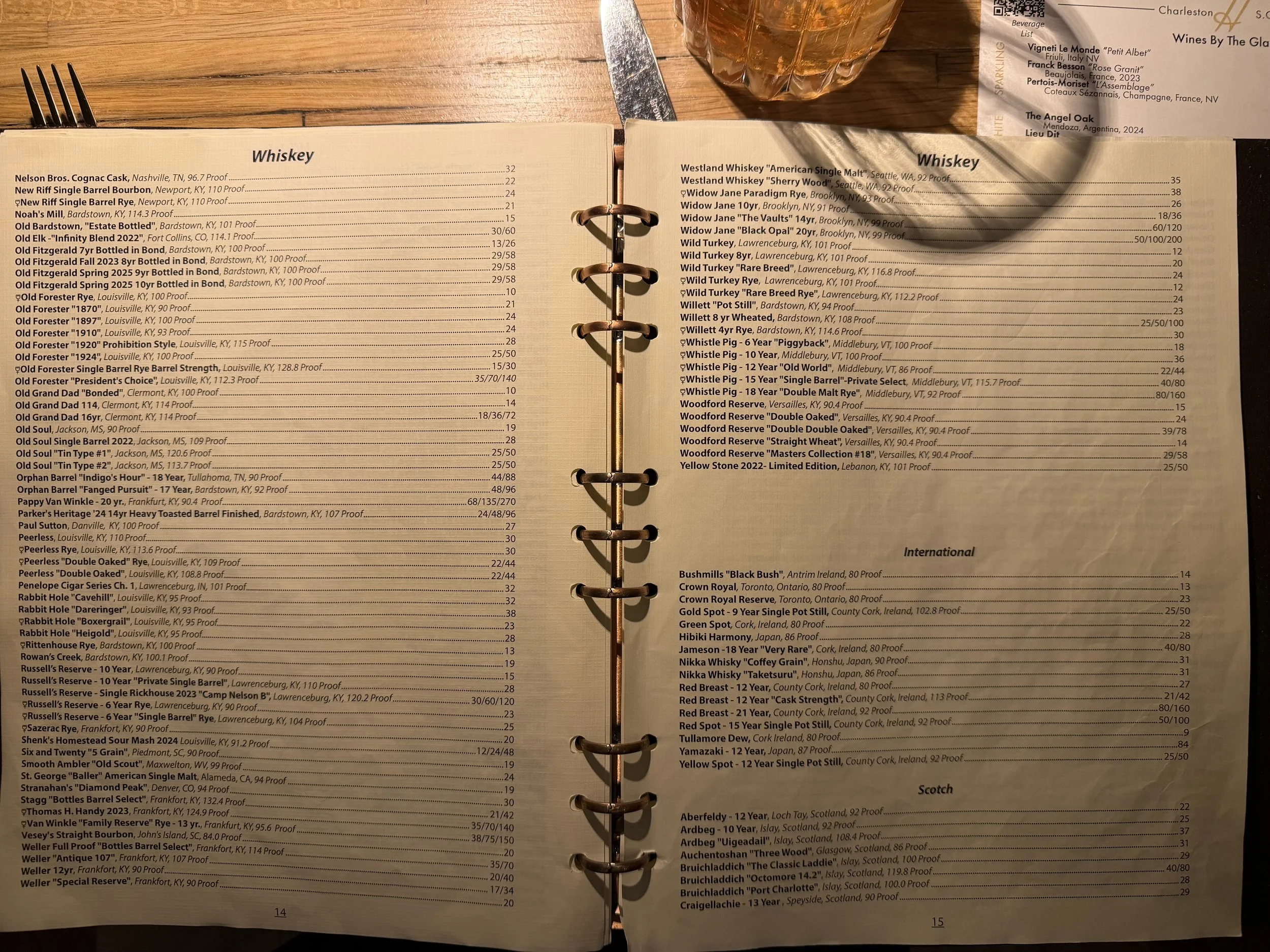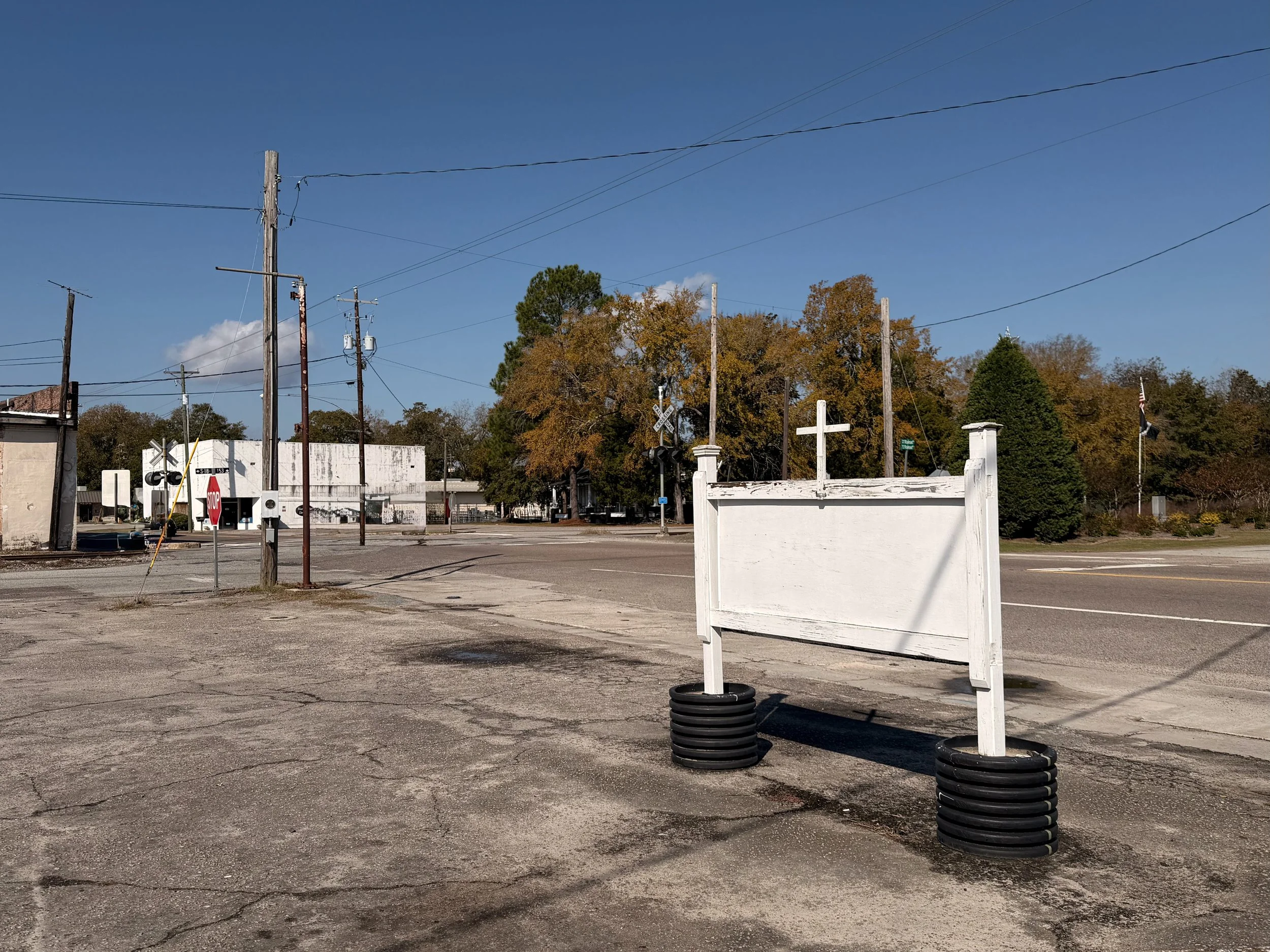On the Rural Route
A detour on a ride…
Charleston is a refined, elegant city, sitting between the Ashley and Wando Rivers, like a colonial, low-rise Manhattan. It’s full of refined, elegant people, excellent restaurants, and classy hotels, none more so than the Planters Inn, which is where Susie and Gary have been billeted since the beginning of the week.
I—on the other hand—have opted for the more modest La Quinta Inn, more of a motel, just over the James Island bridge on the west. So, like New Jersey, in effect, to sustain the metaphor. I’ve stayed here before, and it’s convenient with a bike, as you can park easily and for free, and Charleston really is like Manhattan as far as traffic and parking are concerned. It’s a $2 bus ride or between $12 & $20 to Uber it into the city, so a reasonable compromise or at least was. More on this later…
After checking in, I looked at the weather forecasts a week ahead, and the temperatures in the region are set to plunge from 26ºC here on the coast to -6ºC where I’m heading on Tuesday next week. I’ll check again tomorrow morning and decide what to do, but for now, it’s drinks in the courtyard that the ritzier rooms in the Planters have exclusive access to before dinner at Husk, one of the restaurants instrumental in making Charleston the go-to city for top-end dining in the US.
They’re quite good at cocktails too, so for the second evening in succession, I had another brain-scrambling concoction. This one is Husk’s take on an Old Fashioned but made from a selection of different whiskies, which is asking for trouble. I suppose I should have known better: Husk has a twenty-five-page Whisky List offering seemingly every American whiskey there is, right up to a 95º proof, 20-year-old, Pappy Van Winkle from Frankfurt, Kentucky, at a mere $270 for a double. So that they might try something experimental with an Old Fashioned shouldn’t have been a surprise.
I escape - just feeling distinctly strange the next morning made worse as, at the opening time at 7.00 a.m., the breakfast room is full of zombie-like characters, loading up on vast plates of whatever is on offer. There is something odd about the people that inhabit these slightly out-of-town, slightly run-down chain motels. Outside of these venues, everyone you meet: black or white; rich or poor; old or young is invariably exceedingly well-mannered, engaging, and articulate. But the motel people just shuffle around, avoiding eye contact, grunting at any verbal interaction, and generally wearing the glare of those who ‘hate for just being born’.
What are they here for? Where have they come from, and where are they going and why? They’re not tourists, that’s for sure. Charleston is one expensive city, and these people seem uniformly poor— so much so that this breakfast is maybe the only thing they will eat today. This parallel, twilight world is unnerving to be in, so I hole up in my room for much of the day. The weather forecast is getting worse, so I need to plot a new route, staying off the Blue Ridge Parkway where snow is forecast and temperatures will reach a high of -1ºC on Tuesday…
After a much more traditional Southern dinner of Fried Green Tomatoes, Devilled Eggs, and a Low Country Bouillabaisse at Magnolia, a grand dame of Charleston’s dining scene for the last 35 years, breakfast at La Quinta is the same depressing scene.
I’m not staying here or anywhere like this again. Some bugs have left me itching all over with what look like small mosquito bites. Given the world of poverty that most of the other guests seem to inhabit, it’s not beyond the bounds of probability that a previous occupant of the bed I’ve just slept in for two nights is the root cause of some kind of infestation.
My revised path is much shorter, and so I take the rural route, the Old Charleston Road, towards the state capital of Columbia, about 130 miles northwest. Of the many lyrical gifts Mary Chapin-Carpenter has bestowed on the world, one of the more curious ones is “I Am a Town,” a first-person personification of an unnamed backwater, somewhere in one of the Carolinas.
I realise this artistic concept might sound a tad pretentious, but it is so perfectly executed that it’s worth a listen if you don’t already know it. Whether stringing together imagery or advertising slogans from yesteryear (Texaco and tobacco, Pabst Blue Ribbon, Southern Serves the South, Last Gas for an Hour) or a landscape of faded billboards, ditches that never drain, trite religious slogans (‘Jesus Knows Your Name’), or just acute observation, (‘A blur from the driver’s side’, ‘A truck up on cinder blocks, missing all its wheels’) there is not a word or caesura wasted in this perfect depiction of rural decay.
Although anonymous, I thought I’d found the archetype of Mary’s Town in Harleyville, South Carolina. Stopping for fuel and a coffee, a juxtaposition of leitmotifs characterising the ‘Faith, Flag, & Freedom’ wisdom of small-town America fell into place: the railway crossing, the Stars & Stripes, a small sculpture dedicated to servicemen from the locale, and, inevitably, a cross.
Trying to frame the shot better, I stepped over the low wall into the car park of the makeshift church next door, once a low-rent commercial building. Within seconds, a huge white truck screeched to a halt in the car park with two huge African-American men inside.
“Hey. How ya doin’?” asked the driver.
“Just taking photos,” I explained.
“This is a church.” He stressed, as if addressing a complete imbecile, “This is a place of worship.” with significant intonation on the last word.
While the pedant in me wanted to say that actually, it was the car park of something calling itself a church but looked more like a truck-stop brothel, the invertebrate in me sensibly won out, so I just explained I meant no offence and stepped back onto the gas station frontage. Shame, as I think the shot had promise.
With that, he seemed happier, grunted something, and sped off to intimidate someone else, no doubt. So the photograph below is and was very much a work in progress, where it will forever remain.
Apart than cowardice, the other reason for not arguing the toss was that I was impressed. Casual empiricism suggests that religious devotion has not done his community many favours, but he was defending what was sacred to him, but doing so in a way that was both robust and reasonable.
Maybe, just maybe, this is one of the reasons the USA continues to work so spectacularly well. There is a shared moral backbone that is unyielding, dignified, and admirable. Tolerant but defiant; just and fair. Shared values that transcend minor divisions. Long may it continue, and is it available for export?



